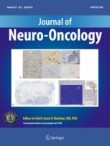
Medicine by Alexandros G. Sfakianakis,Anapafseos 5 Agios Nikolaos 72100 Crete Greece,00302841026182,00306932607174,alsfakia@gmail.com,
Πληροφορίες
Ετικέτες
Τετάρτη 1 Απριλίου 2020
Differentiation of progressive disease from pseudoprogression using 3D PCASL and DSC perfusion MRI in patients with glioblastoma
Differentiation of progressive disease from pseudoprogression using 3D PCASL and DSC perfusion MRI in patients with glioblastoma:


Αναρτήθηκε από
Medicine by Alexandros G. Sfakianakis,Anapafseos 5 Agios Nikolaos 72100 Crete Greece,00302841026182,00306932607174,alsfakia@gmail.com,
στις
10:59 μ.μ.

Ετικέτες
00302841026182,
00306932607174,
alsfakia@gmail.com,
Anapafseos 5 Agios Nikolaos 72100 Crete Greece,
Medicine by Alexandros G. Sfakianakis,
Telephone consultation 11855 int 1193
Εγγραφή σε:
Σχόλια ανάρτησης (Atom)
Αρχειοθήκη ιστολογίου
-
►
2023
(276)
- ► Φεβρουαρίου (133)
- ► Ιανουαρίου (143)
-
►
2022
(1976)
- ► Δεκεμβρίου (116)
- ► Σεπτεμβρίου (158)
- ► Φεβρουαρίου (165)
- ► Ιανουαρίου (161)
-
►
2021
(3661)
- ► Δεκεμβρίου (161)
- ► Σεπτεμβρίου (274)
- ► Φεβρουαρίου (64)
- ► Ιανουαρίου (368)
-
▼
2020
(4554)
- ► Δεκεμβρίου (400)
- ► Σεπτεμβρίου (381)
-
▼
Απριλίου
(613)
- Medicine by Alexandros G. Sfakianakis,
- Medicine by Alexandros G. Sfakianakis,
- Medicine by Alexandros G. Sfakianakis,
- Medicine by Alexandros G. Sfakianakis
- Medicine by Alexandros G. Sfakianakis
- Medicine by Alexandros G. Sfakianakis
- M
- M
- Association between polycystic ovary syndrome and ...
- Airborne transmission of severe acute respiratory ...
- M
- Indigenous Management of Parotid Sialocele Using F...
- Synovial Chondromatosis of the Temporomandibular J...
- Prediction mode of more than 5 central lymph nodes...
- Case report of a cystic parathyroidal adenoma with...
- M
- CD44v3 protein-carrying tumor-derived exosomes in ...
- Squamous Cell and Adenoid Cystic Carcinoma Collisi...
- Cat-scratch Disease with Parinaud's Oculoglandular...
- Necrotizing Fasciitis due to Candida Infection aft...
- Ewing Sarcoma of Larynx: A Rare Case in a 5-Year-O...
- Eccrine porocarcinoma of the head and neck: Meta-a...
- Incidence and survival trends of parotid malignanc...
- M
- Usefulness of intraoperative determination of cent...
- M
- M
- The 24-inch gauge and the common gavel: an entered...
- Pediatric Patients with Previous Anaphylactic Reac...
- Targeting tumor-associated macrophages in head and...
- Vitamin D Status as a Predictor of Postoperative H...
- Anesthesia for TORS for Oropharyngeal Carcinoma: F...
- M
- Event-Related Potential Evidence of Enhanced Visua...
- M
- Evidence of Failure of Oral Third-Generation Cepha...
- Moderate to severe hyperphosphataemia as an indepe...
- Morphological study of the rabbit gustatory lingua...
- Advances and perspectives of dendritic cell-based ...
- Massive pulmonary embolism in pregnancy: intra-arr...
- Supraclavicular left neck mass: an unusual present...
- Malignant peripheral nerve sheath tumour of thyroi...
- M
- Bilateral Fan-Shaped Septal Extension Struts in Au...
- M
- M
- Correlation of p53 expression with Clinical Presen...
- The current modified technique of uvulopalatophary...
- Implantable Neurostimulation for Treatment of Slee...
- M
- Sonographic exploration for fascial exploration (S...
- M
- M
- M
- An impact of microscopic positive margin on incomp...
- M
- M
- The Postoperative Lymphocyte to Monocyte Ratio Cha...
- M
- Giant Thrombosis at Left Anterior Descending Arter...
- M
- Medicine by Alexandros G. Sfakianakis,
- Medicine
- Medicine by Alexandros G. Sfakianakis,Anapafseos 5...
- Medicine by Alexandros G. Sfakianakis,Anapafseos 5...
- Medicine
- COVID‐19 indirect contact transmission through the...
- Value of colchicine as treatment for recurrent ora...
- Cancer Medicine
- Allergy & Rhinology
- Dermatology
- Oral and Maxillofacial Surgery
- Exploding head syndrome, chronotype, parasomnias a...
- Modulation of Airway Epithelial Innate Immunity an...
- Bone Marrow Langerhans Cell Histiocytosis in Assoc...
- Sleep
- The rs11187533 C>T Variant of the FFAR4 Gene Is As...
- Integrative Medicine
- Angiolymphoid hyperplasia with eosinophilia of the...
- Microcystic Adnexal Carcinoma of the Face Treated ...
- Verrucous hyperplasia and verrucous carcinoma in h...
- An Unusual Case of Noisy Breathing in an Infant.
- The role of polysomnography in decannulation of ch...
- Periodontitis is associated with incident chronic ...
- head and neck
- Bloody Diarrhea in a 17-year-old Male......infecti...
- philosophy for medicine
- Preoperative Factors Associated with Extrathyroida...
- Traditional Chinese Medicine
- Vaccination of Mice with isteria ivanovii Expressi...
- Management of epistaxis in patients on novel oral ...
- BRC
- oral oncology
- Antibiotics
- The Utility of Genetic Testing for Familial Hyperc...
- 310 nm UV-LED Attenuates Imiquimod-Induced Psorias...
- Cancer Research
- Nonsurgical Treatments for Extramammary Paget Dise...
- 20 σπάνια γυναίκεια ονόματα και η σημασία τους
- Der Chirurg
- ► Φεβρουαρίου (638)
- ► Ιανουαρίου (691)

Δεν υπάρχουν σχόλια:
Δημοσίευση σχολίου